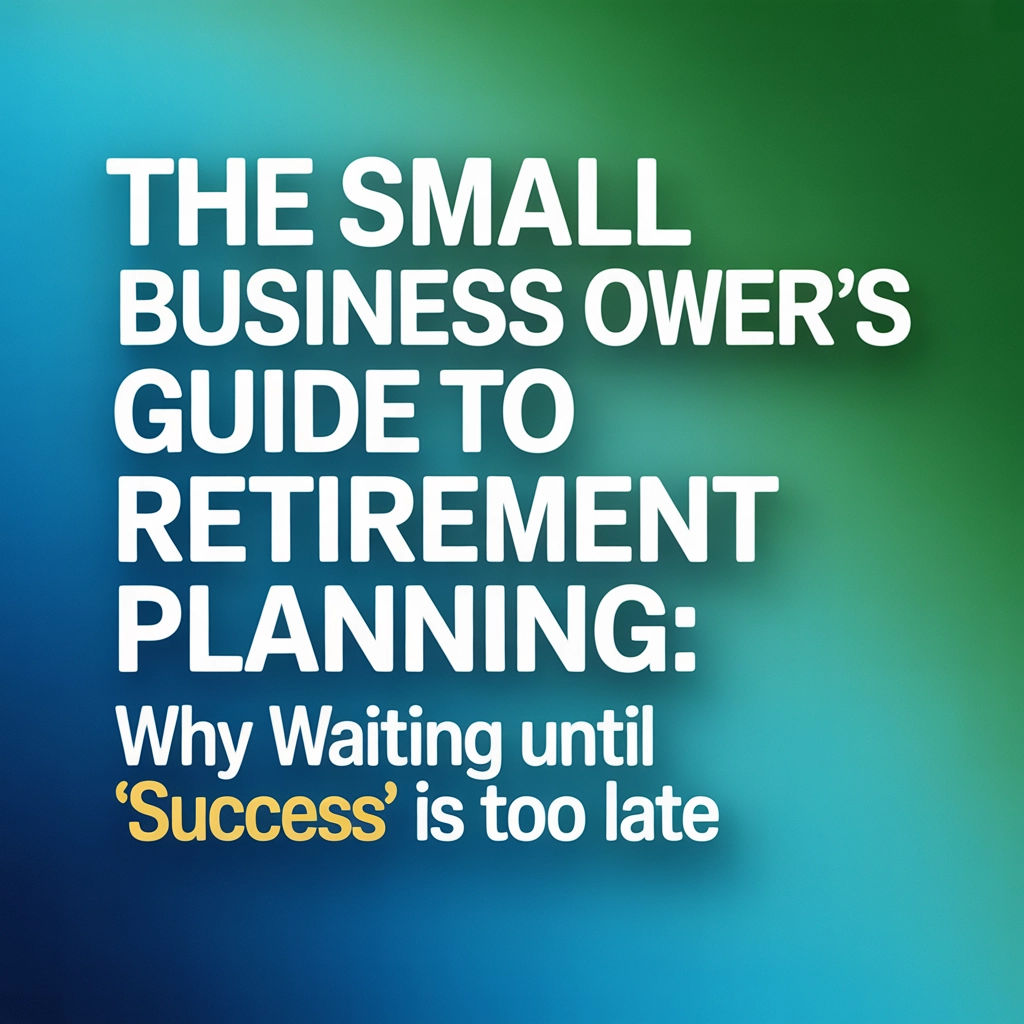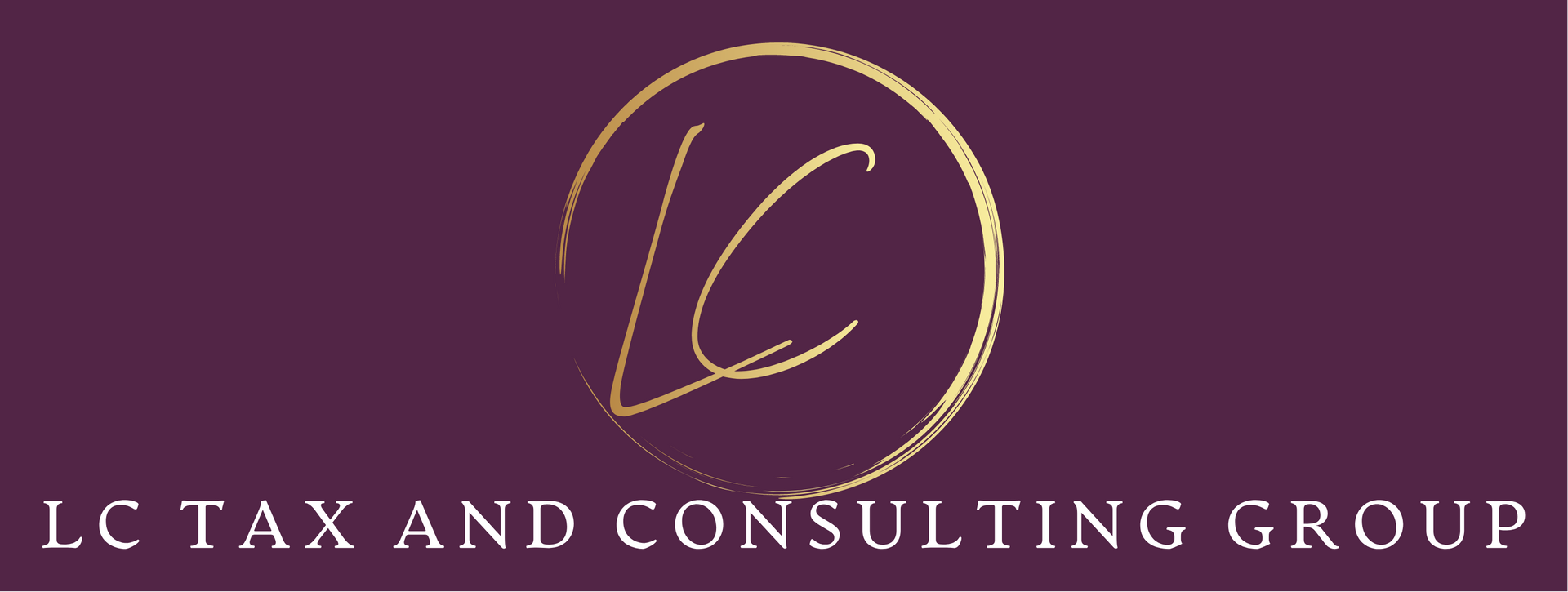The Small Business Owner's Guide to Retirement Planning:Why Waiting Until 'Success' Is Too Late

Let's be honest: as a small business owner, you're probably thinking about everything except retirement. You're focused on next quarter's growth, that new marketing campaign, or finally hiring that assistant you desperately need. But here's the thing: waiting until you feel "successful enough" to start retirement planning is one of the most expensive mistakes you can make.
The reality is stark. Many small business owners don't think about their golden years until it's too late, or they never think about them at all. This delay creates serious financial consequences that compound over time, leaving you with fewer assets and less flexibility when you finally want to step back from your business.
The "Success First" Trap That's Costing You
You know that voice in your head saying, "I'll start saving for retirement once my business is really profitable"? That voice is lying to you. This mindset isn't just flawed: it's financially dangerous.
Here's what typically happens: You pour everything back into your business, thinking you'll eventually sell it for enough money to fund your entire retirement. But here's the uncomfortable truth: most business owners have completely unrealistic expectations about their business's sale value. Would you bet your entire investment portfolio on a single stock? Of course not. So why are you betting your entire retirement on one transaction?

Too many business owners rely solely on selling their business to family members or outside investors to fund their retirement. Unfortunately, the sale price they dream about after decades of hard work rarely matches reality. This creates enormous risk that you'd never accept in your actual business operations.
The statistics tell the story: only about one-third of small businesses offer retirement plans. Among the two-thirds that don't, business owners say they can't afford one (48%), are too busy to set one up (22%), or simply don't know where to start (21%).
Why Starting Now Beats Waiting for "Perfect Timing"
Here's what successful business owners understand: there are retirement investment options available at every level of business success. You don't need to hit some magical revenue number or profit margin before you can start planning for your future.
Starting early: even with modest contributions: allows compound interest to work in your favor. Let's say you start contributing $200 monthly at age 35 versus waiting until age 45. That 10-year head start could mean an extra $100,000+ in your retirement account by age 65, depending on your returns.
Your retirement planning should begin with strategic planning for your personal priorities, not just your business bottom line. Ask yourself: Do you want to work until the day you die? Travel the world? Help raise your grandchildren? Your decision of when to retire should start with your own long-term life goals.
Building Your Retirement Foundation (Even on a Tight Budget)

Let's break this down into manageable steps that won't overwhelm your already packed schedule:
Step 1: Estimate Your Capacity Look at your income and figure out what you can realistically contribute. This isn't about perfection: it's about starting. Even $100 per month is infinitely better than $0 per month.
Step 2: Consider Your Employee Situation Whether you have employees (or plan to) significantly impacts which retirement vehicles are available to you. Don't worry: there are great options regardless of your situation.
Step 3: Choose Your Plan Type This is where working with a financial planner becomes invaluable. They can help you navigate the options and find what works best for your specific situation.
Your Retirement Plan Options (Simplified)
Let's cut through the jargon and look at your real options:
Individual Retirement Accounts (IRAs) These aren't typically company-sponsored, but your business can help you set one up. If you're self-employed, you might benefit from higher annual contribution limits with SIMPLE and SEP IRAs.
Self-Employed 401(k) Plans This is a popular choice because of the tax advantages and higher contribution limits. It's only available if you're a sole proprietor or corporation owner (and your spouse if they're employed by the company). You can't have other employees beyond your spouse for this option.
You can set this up as a traditional 401(k) (money goes in pre-tax, taxed when you withdraw) or as a Roth 401(k) (you pay taxes now, but withdrawals are tax-free later).

Defined-Contribution and Defined-Benefit Plans If you're a high-income business owner, defined-benefit plans work more like a pension with specific benefits when you retire. They require larger upfront costs and annual contributions, but they might be perfect if you're already making significant money and want maximum tax benefits.
Getting Started: Your 30-Day Action Plan
The process is actually easier and less expensive than you think, especially if you don't have full-time employees. Here's your step-by-step approach:
Week 1: Research and Compare Look at different providers: brokerages, banks, and advisors. Compare their fees and services. Don't get paralyzed by choices; focus on finding a reputable provider with reasonable fees.
Week 2: Open Your Account Choose your provider and open your account. Select your investments: target-date funds are great if you want something simple and hands-off.
Week 3: Set Up Automation Set up recurring contributions or reminders to contribute annually. Automation removes the willpower component and ensures consistency.
Week 4: Organize for Success Keep your account statements and plan documents organized for tax time. Create a simple filing system or digital folder.

Optimizing Your Plan as You Grow
Even if you're already saving something, regular optimization is crucial:
- Revisit your plan type annually to see if you could contribute more to a different plan
- Review your investment mix to ensure it still aligns with your risk tolerance and timeline
- Look for opportunities to increase contributions as your business grows
- Evaluate fees and consider if you're paying more than necessary
The Real Cost of Waiting
Here's the math that should motivate you: the longer you wait to begin retirement planning, the more you'll need to save each year to reach the same retirement goals. If you wait five more years to start, you might need to save 40-50% more annually to catch up.
Starting now, even with modest contributions, gives you flexibility. As your business grows, you can increase contributions. New tax credits might even cover most or all of the initial setup costs.
Your Next Step
The key insight is this: retirement planning isn't a luxury you can afford only after achieving business success. It's a fundamental component of responsible business ownership that should begin from day one of your entrepreneurial journey.

Don't let another month pass thinking you'll start "when things settle down" or "when the business is more profitable." Those goalposts will keep moving, and time is the one resource you can never get back.
At LC Tax and Consulting, we've helped countless business owners create retirement strategies that work with their business goals, not against them. We understand the unique challenges you face because we work with entrepreneurs every day.
Ready to stop waiting and start planning? Contact us to discuss your retirement planning options. Your future self will thank you for taking action today.
Remember: you didn't build your business by waiting for perfect conditions. Don't wait for them to secure your retirement either.


